Pear variety Thumbelina
Thumbelina is a pear with fruits of the autumn ripening period, bred at the All-Russian Institute of Selection and Technology of Horticulture and Nursery (abbr. VSTISP, Moscow) through pollination of interspecific hybrid No. 9 with a pollen mixture of southern varieties. The authorship is assigned to Yu.A. Petrov and N.V. Efimova.
In 1998, the variety was submitted for State testing. The places of greatest distribution of Thumbelina include the backyard gardens of the Moscow and adjacent regions. The variety is zoned in the Central region.
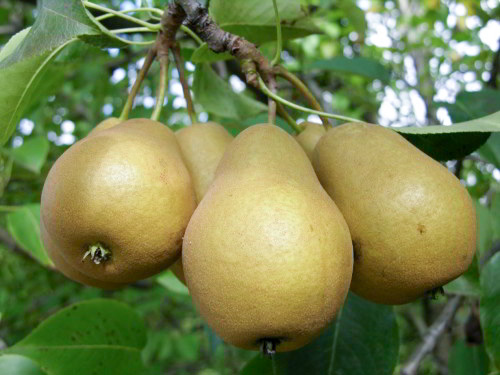
Trees grow small, their growth rates are slow; the crown is rather dense, slightly drooping, at any age (both young and fruiting) it takes a rounded shape. On numerous branches, ringlets are evenly distributed, and fruit setting most often occurs on them.
Shoots are short, medium in thickness, brownish-brown in color. The leaves are medium in size, with a smooth surface, the edges of the leaves are raised, with finely serrated serration. Petioles with small narrow stipules.
Fruits are medium-sized, below average size (the weight of one pear is on average 60 - 70 grams), symmetrical, short, wide, pear-ovate in shape. The peel of pears is very thin, with a smooth surface, completely covered with rusty golden brown spots (but this is not a drawback, but a varietal feature, like that of Bere Bosc). By the main color, the fruits are yellow, the integumentary color is not pronounced. The stalks are quite long, medium in thickness. The cup is small and closed. The sub-cup tube is short. Seed chambers are closed. The seeds are well done. There is no funnel. There is no axial cavity.
The pulp is creamy, oily, very juicy, melting, tender, aromatic, of excellent unusually sweet taste, dessert type. The acid is practically not felt. Moreover, the fruits gain an excellent sweet taste in all weather conditions (including rainy and cold summers). Basically, pears are used fresh.
In terms of ripening of fruits, Thumbelina belongs to the autumn varieties. Pears ripen at the same time, closer to mid-September: at this time, the stalks begin to easily separate from the branches, and the fruits themselves begin to partially crumble. When harvesting selectively, it is recommended to start with the largest fruits. The potability of the variety is quite high. Despite the autumn ripening, the fruits are quite suitable for winter storage: in the refrigerator, pears remain fresh for just over 100 days,
The early fruiting rate is low: the trees begin to bear fruit no earlier than 6 - 7, or even 8 years after planting by one-year-olds. Yields are average but stable. Winter hardiness is good, not lower than the level of most average Russian varieties. Trees endure winter frosts down to minus 38 ° C, as well as spring frosts after a slight thaw down to minus 25 ° C. The drought resistance of the variety is average. Resistance to septoria and scab is very good. Possible lesions with sucker and entomosporium.
The variety is self-fertile.
The main advantages of the Thumbelina pear include its high environmental sustainability, as well as unusually tasty fruits with high keeping quality.
Among the disadvantages: smallish fruits and late onset of fruiting.
To accelerate the onset of fruiting, it is recommended to grow the variety through grafting into the crown of fruiting trees.
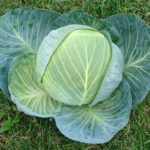
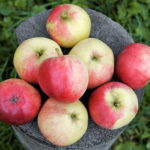
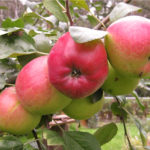
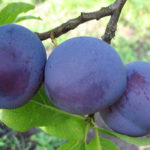
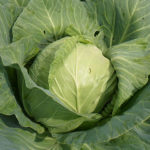




It grows in our Ryazan region, did not enter fruiting for 9 years, brought a small pot with a seedling 40 cm high. Planted on the side of the house, cat. it covers it from the cold northerly winds. Fruiting in a year. The taste is described above. Considering that they wanted to call her "Honey", that says it all. Everyone who has on the site is delighted, who does not dream of getting and planting. The tree has grown powerful, above the roof. I should have cut earlier, but I was afraid that he would freeze and lost time. I am very pleased that I have and dissatisfied that you can hardly buy it on the farms and people cannot appreciate it. Yes, I forgot to write that the ALENUSHKA variety with RED fruits is often passed off as Thumbelina. Look, do not fall for a divorce - ask what color the fruit is !!!
In 2016, I cut down the central trunk and thickening branches from one, and in 2017 from another pear, I formed them in the shape of a "bowl", otherwise it is inconvenient to collect from above. Next year it is necessary to repeat it, otherwise they "twist" upwards, and there it is inconvenient to collect even with a puller. I took it from the Biryulevsky nursery with OKS. One of the gardeners took cuttings from me, says that they took root on his pear, and bloomed, according to him, in the second year after grafting into an adult tree.
I have 2 trees, I "drowned" them one and a half bayonets below the soil level, since my site is "burning out" and there was no way to provide watering. I dug a ring trench after planting, but they grew very poorly, and they were swayed by the wind. Then I bought a "berry giant", crushed its granules, loosened the seedling so that the roots form gaps, and poured the crushed "giant" into these gaps and spilled it so that it would "flow into the gaps." After that, the seedling began to grow by leaps and bounds :-) I put branches, foliage, tops from tomatoes, peppers, cucumbers, grass and other vegetable sundries in the holes with the seedlings. It is very convenient, it does not carry it out of the hole, and now I can pour a ton of water under each tree. On our massif (poor, clayey soil), pears often have problems with the bark, and many die, but Thumbelina is grafted on a quince, and feels fine, although for the first few years a quince shoot has been climbing, but it is easy to remove it. sometimes in the spring there is water in the pits for a month, but I did not have any problems because of this (in fact, for this, landing in the pits was organized). And, yes, after “Thumbelina” pears are no longer “rolled”, which gardeners sometimes treat me with, although at first, when I saw the fruits for the first time, I was surprised a lot by their color, I waited for dessert pears, but “potatoes” grew on the tree ... And yet, the first harvests were almost completely eaten by wasps and hornets, so in the future I am in a hurry with harvesting, and as for me, slightly unripe fruits, although "stone", are more pleasant than fully ripe ones. The first flowering was in 10-11 years, and no tricks led to anything. And yet, the removed fruits in the heat overripe in a week, so I once lost half of the harvest :-(